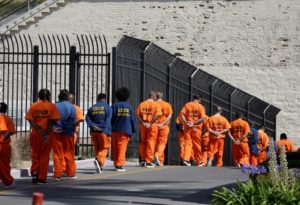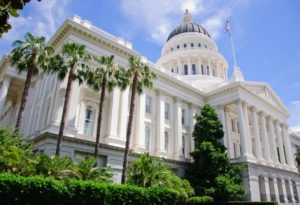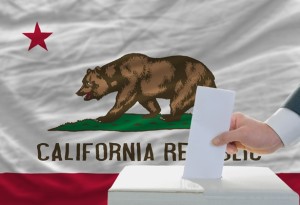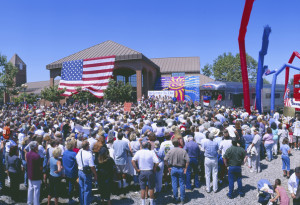Posts Tagged: districts
News
Encouraged by their Nov. 7 election victories in other states, Democrats now have even higher hopes of flipping the House in 2018, and a big factor governing whether they will succeed rests on outcomes in eight Republican-held California districts. The eight incumbent Republicans in Southern California and the Central Valley that Democrats hope to defeat a year from now make up one-third of the 24 seats needed to give Democrats control of the House.
News
Much of redistricting law is arcane and technical. But often what seems like a little detail can become a significant factor in how the lines will be drawn. Take, for example, prisoners. The U.S. Census counts prisoners just like any other part of the overall population. The Census captures people at their “usual residence,” meaning the place where they live and sleep most days.
News
Part 3: As California grows, the shifts of population within the state can have a dramatic impact on the drawing of future political boundaries. These shifts can be broken into two different types of population counts: The absolute population counts as defined by the 2020 U.S. Census, and the citizen voting age populations, or CVAP.
News
Asked about the prospect of a Democratic supermajority in the California Legislature after Nov. 8, leaders of both parties are being, well, supercautious. With a Democratic supermajority, which means majorities of two-thirds or greater in each house, Republicans could go from marginalized to irrelevant.
Opinion
OPINION: The U.S. Supreme Court’s recent decision to vacate the bribery conviction of former Virginia Gov. Bob McDonnell has implications for California and its anti-corruption statute. The trial jury found that McDonnell performed official acts in exchange for gifts. But the Supreme Court decided that the jury was incorrectly instructed on the definition of the “official act” element of the federal corruption statute.
Opinion
OPINION: In a fairly rare occurrence, this year’s primary election in California could actually matter in terms of who becomes the Republican Party’s nominee. California had a chance of being relevant with March primaries in 1996, 2000 and 2004; however, Bob Dole and George W. Bush already had largely sealed their deals.
Analysis
With the release of official voter registration numbers this week, the focus has been on the continued decline in Republican registration and growth in Independent voters. The stories, for the most part, treat these two factors as directly related, like two ends of a see-saw. As Republicans lose ground, independents grow and common wisdom within California’s political class jumps to the causal link. However, looking closer at the data, there are two significant factors that should temper this quick rush to judgement.
Opinion
OPINION: The Paris talks brought into clearer focus just how many so-called moderate Democrats who sided with the oil industry this year re out of touch with their caucus, their party and their state. This small tribe of transactional politicians, whose campaign coffers have been filled with oil company dollars for years, did the shameless bidding of Big Oil once again this year, failing to protect Californians from greater environmental harm.
News
Republicans have created a political mosh pit featuring 36 declared candidates and filled with no shortage of pointed invective. Of the 36 Republicans, 17 are considered serious contenders. As usual, those contenders have descended on early primary and caucus states, chumming through New Hampshire, Iowa and South Carolina in search of support and generating plenty of news along the way. At the moment, in California, they are only chumming for money.
News
That whooshing sound you hear is the sigh of relief from California political reformers. The U.S. Supreme Court today rejected an attempt by the Arizona Legislature to dismantle that state’s voter-approved, independent commission that draws the political boundaries for legislative and congressional districts. Arizona lawmakers had argued that the commission – which California used as a model for its own redistricting commission — was unconstitutional because it cut them out of the map-drawing process.










